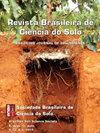基于x射线荧光和光子衰减的法医土壤分析新方法
IF 2
4区 农林科学
Q3 SOIL SCIENCE
引用次数: 1
摘要
土壤在法医科学中的应用与土壤的几种化学、物理和生物特性有关,这些特性与土壤粘附不同材料和表面的能力有关。法医土壤专家和警方调查人员一直在使用土壤样本作为刑事调查的辅助手段。土壤可以作为指纹,因为它们具有不同的物理、化学、生物和矿物学特性。然而,根据用于表征土壤的分析工具,区分具有相似性质的样品可能是不可能的。因此,利用土壤作为指纹材料需要增加测量变量的数量以及测量的准确性和精密度。研究了基于x射线荧光(XRF)和辐射相互作用参数的土壤鉴别方法的可行性。通过对土壤粒径、元素组成(XRF)、质量衰减系数(μ)、原子(σ a)和电子(σ e)截面、有效原子序数(zeff)和电子密度(N el)的分析,评价核参数对土壤的鉴别潜力。研究了在0.00m ~ 0.05 m土层采集的10种不同土壤类型。辐射相互作用参数通过XCOM计算机程序获得,实验测量采用传统的伽马射线衰减法,利用241 Am和137 Cs放射源进行。结果表明,两种土壤在粘土、粉砂和砂土含量以及主要氧化物含量方面存在较大差异。通过多变量分析验证了这些差异对辐射衰减特性的影响。对于最低光子能量(10 keV和30 keV), σ e是区分土壤的最有意义的参数。对于59.5 keV以上的能量,zeff和nel是最重要的参数。计算参数与实测参数吻合较好。研究结果表明,辐射相互作用参数在犯罪现场调查中具有很大的应用潜力,为土壤识别提供了新的参数。本文提出的方法的主要优点是速度快,易于实现,不需要强大的计算机,并且XCOM代码可以在NIST(美国国家标准与技术研究所)网站上在线运行。本文章由计算机程序翻译,如有差异,请以英文原文为准。
A novel approach based on X-ray fluorescence and photon attenuation to the analysis of soils for forensic investigation
: Use of soil in forensic science is related to its several chemical, physical, and biological properties associated with its capacity to adhere to different materials and surfaces. Forensic soil experts and police investigators have been using soil samples as an aid in criminal investigations. Soils can act as fingerprints because they present contrasting physical, chemical, biological, and mineralogical properties. However, depending on the analytical tools utilized to characterize the soil, differentiating the samples when they have similar properties might be impossible. Thus, soil utilization as a fingerprint material requires increasing the number of variables measured as well as the accuracy and precision of the measurements. This study presents the feasibility of methods based on X-ray fluorescence (XRF) and radiation interaction parameters to discriminate soils for forensic investigations. Analyses of soil particle size, elemental composition (XRF), mass attenuation coefficient (μ), atomic (σ a ) and electronic (σ e ) cross-sections, effective atomic number (Z eff ), and electron density (N el ) were carried out to evaluate the potential of nuclear parameters to differentiate soils. Ten different soil types collected at 0.00-0.05 m layer were studied. The radiation interaction parameters were obtained through the XCOM computer code, while the experimental measurements were carried out by the traditional gamma-ray attenuation method utilizing the radioactive sources of 241 Am and 137 Cs. The results showed that the soils presented broad differences in terms of clay, silt, and sand contents as well as in the major oxides. These differences influenced the radiation attenuation properties as verified through the multivariate analysis. For the lowest photon energy studied (10 and 30 keV), σ e was the most interesting parameter to discriminate the soils. For energies above 59.5 keV, Z eff and N el were the most important parameters. Good agreement was found between the calculated and measured parameters. The findings of this study indicate that radiation interaction parameters have great potential for crime scene investigation providing new parameters for better discrimination of soils. The main advantage of the method presented here is that it is fast, easy to implement, does not require powerful computers, and the XCOM code can be run online at the NIST (National Institute of Standards and Technology, USA) website.
求助全文
通过发布文献求助,成功后即可免费获取论文全文。
去求助
来源期刊

Revista Brasileira De Ciencia Do Solo
农林科学-土壤科学
CiteScore
3.00
自引率
11.80%
发文量
32
审稿时长
9-24 weeks
期刊介绍:
The Revista Brasileira de Ciência do Solo is a scientific journal published by the Brazilian Society for Soil Science (SBCS), founded in 1947, and is responsible for the propagation of original and inedited technical-scientific work of interest for Soil Science.
Contributions must not have been previously published or submit to other periodicals, with the only exception of articles presented in summarized form at professional meetings. Literature reviews are accepted when solicited by the Editorial Board.
 求助内容:
求助内容: 应助结果提醒方式:
应助结果提醒方式:


